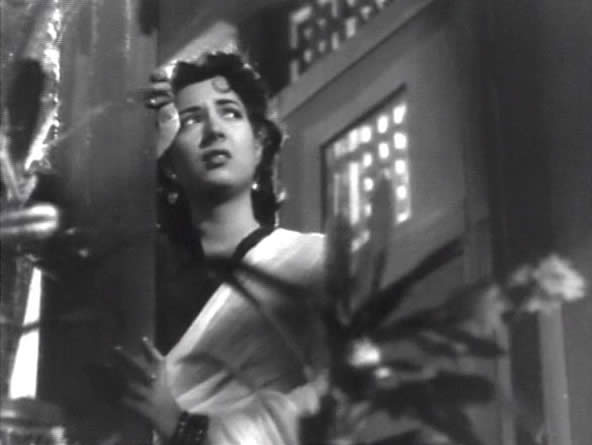
C. I. D.
(1956, Hindi, 146m)
Directed by Raj Khosla
Produced by Guru Dutt for Guru Dutt Films Pvt. Ltd.; Screenplay and dialogues: Inder Raj Anand; Music: O. P. Nayyar; Lyrics: Majrooh Sultanpuri; Dances: Zohra Sehgal; Cinematography: V. K. Murthy; Playback Singers: Mohammad Rafi, Geeta Dutt, Shamshad Begum, and Asha Bhosle.
Starring Dev Anand (Shekhar), Shakila (Rekha), Johnny Walker (Master), K.N. Singh (commissioner), Kumkum, and introducing Waheeda Rehman.(Kamini)
(Notes by Corey Creekmur, Institute for Cinema and Culture, University of Iowa)
The Bombay crime thriller C.I.D. (or Criminal Investigation Department, a term used by most of the world’s police forces established under colonial rule), though directed by the talented Raj Khosla, was produced by Guru Dutt for his own company, and signals his influence throughout. In many ways the film resembles his own debut as a director, BAAZI (“The Gamble,” 1951), an underworld tale that also starred Dev Anand, one of the era’s most popular male stars and Bombay’s equivalent to contemporary tough guys like France’s Jean Gabin or Hollywood’s Humphrey Bogart. C.I.D. also provides the Hindi film debut of the stunning Waheeda Rehman, soon one of Bombay cinema’s biggest stars, and Guru Dutt’s leading lady in his masterpieces PYAASA (“Thirst,” 1957) and KAAGAZ KE PHOOL (“Paper Flowers,” 1959). Guru Dutt’s influence is also evident via comic actor Johnny Walker, a staple of the director’s troupe, and through the brilliant cinematography of V. K. Murthy, the essential craftsman of Guru Dutt’s gloomy world view (here in their fifth collaboration) whose work should be ranked with Hollywood’s John Alton or Mexico’s Gabriel Figueroa among cinema’s greatest black-and-white cameramen.
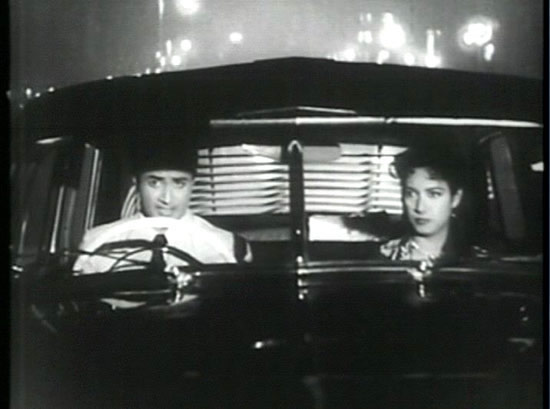
C.I.D. was the third film produced by Guru Dutt Films (following AAR PAAR [“Heads or Tails,” 1954] and MR. AND MRS. 55 [1955]), and the first major assignment for Guru Dutt’s assistant Raj Khosla, whose success with this film would launch a long career. (When C.I.D. proved a hit, Guru Dutt presented Khosla with a Dodge convertible.) In style and theme, however, C.I.D. invokes the work of Navketan, the film production company established in 1949 by Dev Anand and his older brother Chetan. (In 1953 the younger brother Vijay Anand would join the team and eventually direct some of the company’s finest films, usually starring his brother Dev.) Navketan had produced BAAZI (reuniting Guru Dutt and Dev Anand, who had begun their careers at Pune’s legendary Prabhat Studio), and specialized in thrillers featuring proletarian heroes, such as TAXI DRIVER (1954) and KALA PANI (“Black Water,” 1958). Naveketan was consciously translating the influential work of the radical Indian Peoples’ Theatre Association (IPTA) into a mass form, and C.I.D.’s screenplay by Inder Raj Anand, also closely associated with the Bombay wing of the IPTA, extends this populist influence on the post-Independence Hindi crime film. (C.I.D.’s “real” villain is not, therefore, the working-class thug it presents unambiguously as a murderer, but the rich and powerful figure who can hire such a character while appearing to keep his own hands clean.)
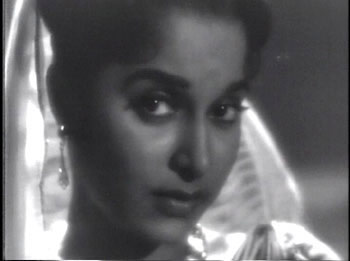
Like many Navketan productions from the same period, C.I.D. argues for the existence of the unexplored category of popular Hindi “film noir”: Bombay filmmakers, it appears, were making films contemporaneously with Hollywood that exhibit many of the thematic concerns and perhaps more of the stylistic devices that French critics would identify through the evocative term noirbeginning in the 1950s. In the now substantial body of criticism on the topic, critics have commonly identified European precursors to American film noir – the latter often the product of European immigrant talent – but Asian examples have only been tagged with the label of "neo-noir" along with the more recent U.S. examples indebted to the earlier models. But C.I.D., among other Hindi films, suggests a simultaneous production of what critics now call “historical noir” to identify the original body of work that suggested a common perspective and stylistic practice in post-WWII cinema, even though its own producers had no clear label for what they were then creating. Film noir has always, then, been a retrospective and retroactive category, but so far popular Hindi films from the 1940s and 1950s haven’t been collected under the noir net. Films like C.I.D. suggest that a significant component of film noir’s international appeal and reach has therefore been overlooked. (The category of neo-noir, which has been more commonly applied to international examples ranging from the films of Hollywood’s Quentin Tarantino to Hong Kong’s John Woo or Japan’s Takashi Miike, might be a useful category through which to explore recent Bombay gangster films like SATYA and COMPANY, or a psychological thriller like ROAD, films which more readily acknowledge their global affiliations and influences.)

The plot of C.I.D. is (unlike the most celebrated American film noir) fairly straightforward: a mysterious series of phone calls authorizes the intimidation and murder of Shrivastav, a crusading newspaper editor who is about to expose a corrupt public figure. His murder is witnessed by Master (Johnny Walker), a petty thief in the wrong place at the wrong time who is suspected of the crime until Inspector Shekhar (Dev Anand) takes over the case and begins his investigation. Shekhar, summoned by Shrivastav, had almost caught the fleeing murderer by commandeering a young woman’s car before she tossed the keys out of the window during a storm. Despite this setback, Shrivastav’s killer is soon caught and identified by a nervous Master, but Shekhar is warned to stop any further investigation by a mysterious woman (Waheeda Rehman) who has summoned him to her home. After waking up in his boss’ home, Shekhar discovers that the petulant young woman whose car he shared is Rekha (Shakila), his superior’s daughter. At Rekha’s birthday party he again meets the mysterious young woman, now identified as Rekha's longtime friend Kamini, who apparently drugged him after their meeting. Now even more determined to identify the power behind the actual killer, Shekhar continues his search and is cleverly framed for killing his suspect in jail. After a trial finds him guilty, Shekhar runs from the law as well as the criminals until he cracks the case with the unexpected help of Kamini. A final scheme to catch the real villain in the wounded Kamini’s hospital room almost goes awry, but the film concludes with tarnished reputations and budding romances restored.
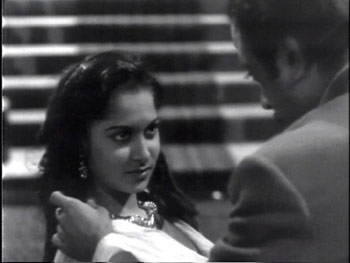
C.I.D. implicitly announces its cosmopolitanism through its emphatic modernity: set in a thoroughly up-to-date Bombay, the film barely hints at the elements of traditional Indian culture that commonly interact with modern life in most Indian films: only the film’s first song sequence takes its characters out of the city and offers glimpses of innocent village life. (While the women in the film, unlike the men, appear in more conventional Indian clothing, they are otherwise modern, city girls who drive cars and wield guns.) In its narrative the film relies upon many of the elements of the traditional detective story: an unambiguous hero whose honor will be tested and reclaimed; a melodramatic villain whose house hides secret panels and rooms; a good girl and femme fatale whose charms both vie for the hero’s attention; and a cowardly, comic sidekick whose minor crimes are easy to dismiss when his honorable actions and basic goodness reveal themselves. But the film also twists these conventions somewhat toward the more morally ambivalent world of film noir: by clarifying the identity of its villains early on, the film does not function as a conventional “whodunit”, but locates its suspense elsewhere: the film suggests that the problem to be solved is less a mystery than a social circuit of corruption that moves down through different classes of society (the film’s emphasis on class rather than caste seems to be another of its IPTA-influenced elements). The true villain of C.I.D. is in fact a deviant version of the kind of new Indian citizen who was more often celebrated in films of the progressive, Nehruvian era: a successful capitalist who generously supports social causes and charities. In arranging the murder of a crusading newspaper editor – whose Congress party affiliations are signaled by his clothing – the fat cat, whose influence extends to police officials, will be revealed as a potential cancer in independent India’s body politic that must be cut out. (The film also hints at the villain’s sexual deviance when we learn that Kamini was taken from an orphanage by him: whether she has been raised as a daughter or kept as a mistress, she has clearly been corrupted by the older man.)
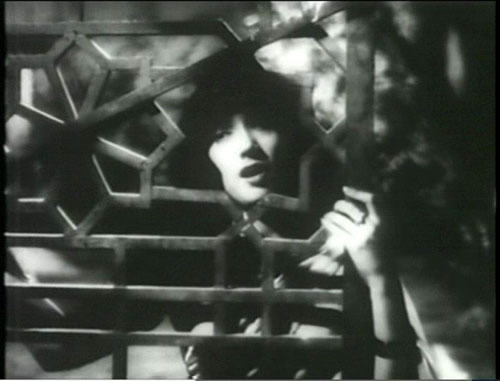
If C.I.D.’s story incorporates some of the differences between traditional detective stories and the hard-boiled variations that inspired film noir, in its visual style the film’s affiliation with Hollywood noir is even more evident. Much of the film takes place at night and in deep shadows, and a consistent pattern of framing encloses “trapped” characters within windows and behind bars. A graphic match between the captured murderer being put behind bars and Shekhar’s caged parrot acknowledges the film’s awareness of such visual metaphors. (In a later scene Kamini also employs the parrot for equally playful verbal metaphors, wordplay our hero is a bit slow to pick up on.)
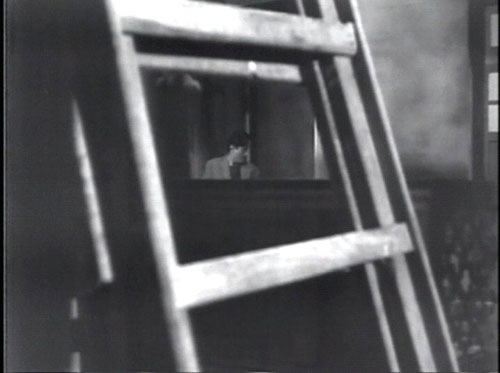
Once Shekhar has been “framed” for the murder of his prisoner and (like a Hitchcock hero) is on the run from cops and criminals, Murthy’s camera relentlessly confines Dev Anand in frames within frames, a motif commonly celebrated in discussions of the visual style of Hollywood film noir. One of the film’s most effective sequences precedes the credits: beginning with an extreme close-up of a telephone – a “common” object in Hollywood films by the 1950s, but still a prop evoking the West and modernity for India – this miracle of modern communication is being misused to harm rather than help the recently connected nation: a series of shots of mysterious figures traces a circuit of cross-class corruption that will lead to murder and the obfuscation of the truth. This opening resembles the famous sequence that starts Fritz Lang’s 1953 film noir THE BIG HEAT, which has been described by Colin McArthur (in his 1992 BFI monograph on the film) as “a masterly condensation of film narrative” that relies upon the “linking motif” of the “generic technology” of the telephone to connect the film’s main characters across space and social levels. The sequence in C.I.D. functions in exactly the same way, but does not appear to be an imitation of or homage to Lang’s film. (It’s hard to imagine that Lang’s film was seen by the people responsible for C.I.D., since Lang’s violent film was released in Great Britain with an X certificate – the most restricted category – in 1953. In any case, the film’s status as a “classic” only came later.) Is it time to acknowledge a “masterly condensation of film narrative” in a Bombay film from the 1950s produced three years after Lang’s celebrated masterpiece?
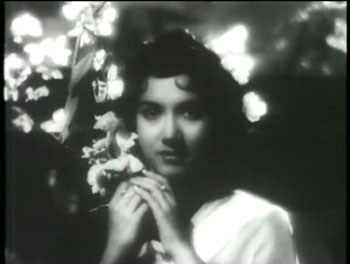
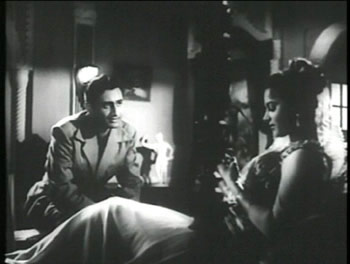
Yet while taking on some of the trappings of American film noir (and components of the Hitchcock-type thriller), C.I.D. remains a commercial Hindi film: it can’t quite allow its femme fatale to be really bad, and redeems her in the end; it mixes genres more freely than most Hollywood films, happily including a scene where Johnny Walker’s hat rises off his head when he spies a pretty girl, or shifting to a chase through a Gothic house towards its hospital-drama conclusion. Those unfamiliar with popular Hindi cinema will wonder, however, if a movie featuring six song sequences wouldn’t more accurately be called a musical (a genre category that seems redundant or misleading for India’s song-suffused popular cinemas). It’s easy to forget that even the toughest American film noir often features at least one song, usually performed in a night club, sometimes by a popular singer in a cameo role, and films like GUYS AND DOLLS, WEST SIDE STORY, and CHICAGO all attest to a regular fusing of crime stories and the musical. C.I.D. especially suggests Guru Dutt’s hand in its song sequences, since his creativity in this area – which can easily become formulaic – remains one of his singular contributions to Hindi cinema. What at first glance can appear to be fairly irrelevant insertions into the narrative are in fact a carefully arranged sequence which grounds the film in a meaningful pattern of circles, many of which challenge the circle of crime depicted in the opening sequence. The first song, “Booj mera kya naam re …,” performed outdoors by a village girl is, again, the film’s only glimpse of traditional India. As a playful song about a woman who asks a man to guess her name, the song contrasts with the film’s final song, performed indoors by the film’s mysterious city girl, who sings in order to distract the villain and communicate to the hero. (A close-up of Waheeda Rehman’s face when she drops and then restores her smiling façade demonstrates her subtle acting skills at this early stage in her career.) Another circular pattern is built up across the three song sequences that develop Shekhar and Rekha as a couple: “Leke pehla pehla pyar …” (“With my first love…”) is sung by a male and female street performer whom Shekhar pays to “eve-tease” Rekha. The female singer literally encircles Rekha three times, and is filmed repeatedly in a series of circular panning shots as she whirls around her prey. Rekha does not yet recognize that, like the murderer, she too has been caught by Shekhar’s relentless pursuit. When the couple alone perform “Ankhon hi Ankhon me …” (“In just an exchange of glances …”) they circle one another willingly and exchange positions as they song’s lyrics play with images of “secret” lovers who “steal” one another’s hearts: by this point in the film, love and police work follow similar paths of progressive encircling until someone gets caught.
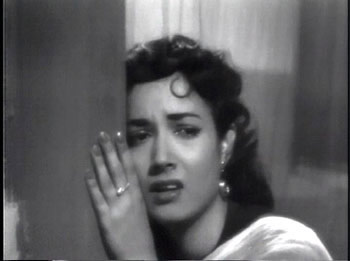
Most creatively of all, the once flirtatious love song “Leke pehla pehla pyar…” is reprised as a tormenting number that moves in and out of Rekha’s fevered mind: she’s now encircled, not by annoying outsiders, but by her own conflicted emotions as the song literally moves in and out of her body. (This reprisal anticipates, for instance, the later contrasts between the “happy” and “sad” versions of “Yeh dosti hum nahin…” from SHOLAY , or the “female” and “male” renditions of “Choli ke Peeche” in KHAL NAYAK.) The song, we might say, circles back and reverses its mood and purpose. The four songs that intensify Rekha’s and Shehkar’s romance narrow from a half-dozen to four to two and finally a single divided participant; yet like the overall narrative which itself comes full circle, returning Shekhar to his official position and honor, the film’s love story and careful sequence of songs challenge the crime story’s negative circuit of corruption by offering a series of positive and more seductive loops.
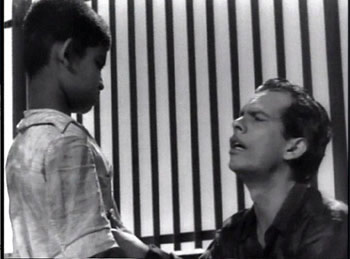
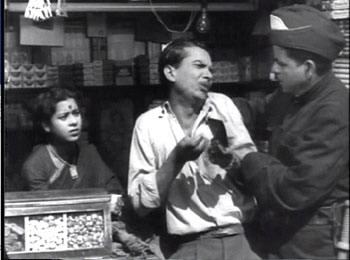
Eventually, however, although filmed along Bombay’s sunny oceanfront drives, it’s Johnny Walker’s famously ironic “Aye dil hai mushkil jeena yahan…” (“Dear heart, it’s difficult to live out here …”) with its refrain “yeh hai Bombay meri jaan” (“This is Bombay, my dear…”) that seems most evocative of a noir sensibility insofar as it is an affectionate but ambivalent tribute to the dirty, dangerous city in which slitting people’s throats is called “business” (the lyric supplies the unsavory English word). Like a notable strain of American film noir, the sequence balances its stylization with a documentary impulse when we are shown shots of Bombay landmarks while a movie comedian cavorts through actual city streets. The children who follow him (and the camera) along Bombay’s Marine Drive also blur the line between this film’s status as a fantasy set in India in 1956, and as a document recording Indian modernity in that same year.
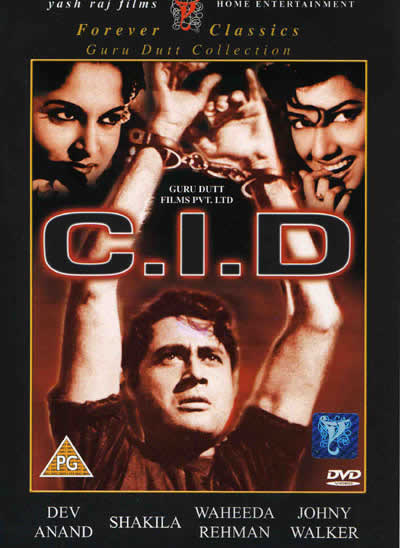
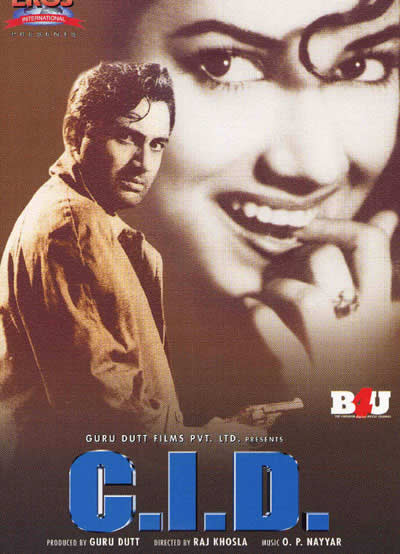
[C.I.D. is available on DVD from both Yash Raj films in its Guru Dutt Collection and from Eros/B4U. The Yash Raj DVD offers a nice copy of the film, provides subtitles for songs, and includes Nasreen Munni Kabir’s excellent documentary “In Search of Guru Dutt” as a supplement. The Eros/B4U version does not provide subtitles for songs, and offers a decent but less attractive copy of the film. The soundtrack of the film, including dialogs, is available as part of Saregama’s “Classics Forever” series.]
Recommended Readings:
Nasreen Munni Kabir, Guru Dutt: A Life in Cinema. New Delhi: Oxford India, 1997.
Jyotika Virdi, The Cinematic ImagiNation: Indian Popular Films as Social History. New
Brunswick: Rutgers UP, 2003.